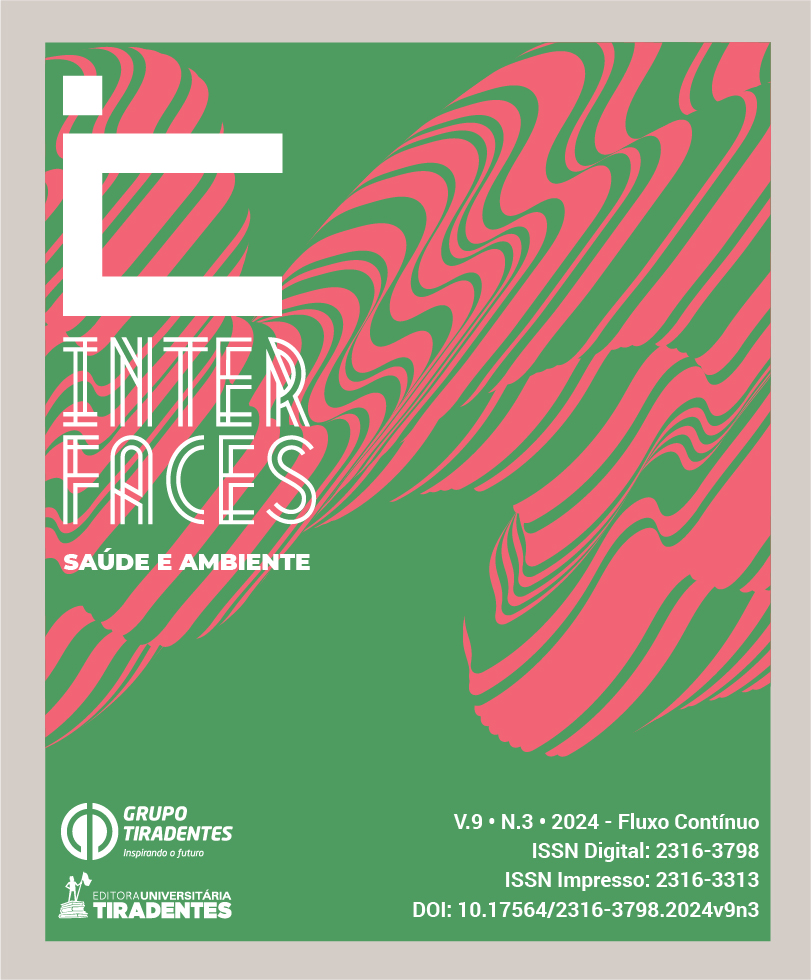OCORRÊNCIA DE COMPOSTOS BIOATIVOS EM ESPÉCIES DAS FAMÍLIAS BIGNONIACEAE E SOLANACEAE COM ESPECTRO DE AÇÃO ANTI-LEVEDURA
DOI:
https://doi.org/10.17564/2316-3798.2024v9n3p389-404Publicado
Downloads
Downloads
Edição
Secção
Licença
Direitos de Autor (c) 2024 Interfaces Científicas - Saúde e Ambiente

Este trabalho encontra-se publicado com a Creative Commons Atribuição-NãoComercial 4.0.
Autores que publicam nesta revista concordam com os seguintes termos:
a. Autores mantêm os direitos autorais e concedem à revista o direito de primeira publicação, com o trabalho simultaneamente licenciado sob a Licença Creative Commons Attribution que permite o compartilhamento do trabalho com reconhecimento da autoria e publicação inicial nesta revista.
b. Autores têm permissão e são estimulados a distribuir seu trabalho on-line (ex.: em repositórios institucionais ou na sua página pessoal), já que isso pode gerar aumento o impacto e a citação do trabalho publicado (Veja O Efeito do Acesso Livre).
Resumo
Na Amazônia estão constituindo a diversidade vegetal uma variedade de espécies de plantas medicinais com propriedades terapêuticas complementares no tratamento de doenças, incluindo as de origem microbiana. Este estudo objetivou avaliar a ação antimicrobiana dos extratos orgânicos de Mansoa alliacea, Pleonotoma jasminifolia e Solanum sessiliflorum contra as leveduras patogênicas oportunistas Candida albicans DPUA 1340, C. tropicalis DPUA 023, Trichosporon beemeri DPUA 213 e T. beigelii DPUA 208, bem como selecionar fonte de biocompostos com maior espectro de ação antimicrobiana para futura aplicação industrial. A extração dos biocompostos foi obtida das folhas das três espécies vegetais por maceração assistida por banho ultrassônico com solventes orgânicos (hexano, acetato de etila e metanol). A avaliação da atividade antimicrobiana foi realizada pelo método de difusão em ágar por poço, microdiluição em caldo para determinar Concentração Mínima Inibitória (CMI) e por bioautografia. Os resultados mostraram que os extratos orgânicos das três espécies vegetais apresentam atividade inibitória contra as leveduras teste, exceto para T. beigelii, e que os extratos hexânicos das três espécies vegetais apresentaram o maior espectro de ação, sendo T. beemeri a mais sensível. Os resultados da CMI dos extratos hexânicos mostraram atividade fraca para P. jasminifolia e moderada para M. alliacea e S. sessiliflorum. A análise bioautográfica dos extratos hexânicos mostrou ação inibitória de biocompostos com Rf entre 0,6 a 0,93, e o uso de reveladores químicos indicou a presença de classes fitoquímicas como alcaloides, terpenos e flavonoides. Para viabilizar a aplicação industrial, análises adicionais devem ser realizadas.




















